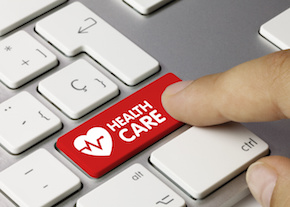Blog Articles
Wednesday, January 28th, 2015
 We’re one month into 2015, and health information technology (health IT or HIT) is getting bigger than ever. This trend shows no sign of stopping, considering improvements in technology, continuing adoption of electronic health records (EHR) and the widening availability of health data.
We’re one month into 2015, and health information technology (health IT or HIT) is getting bigger than ever. This trend shows no sign of stopping, considering improvements in technology, continuing adoption of electronic health records (EHR) and the widening availability of health data.
With the rapid advances in the field comes a large demand for skilled health IT professionals, as well as academic programs like those offered by UTHealth School of Biomedical Informatics that are up on the latest trends. Here are five ways SBMI is looking to the future of health IT.
By consolidating data centers, health IT schools are able to save resources in-house, find avenues of collaboration with other fields and increase research and instructional opportunities regarding big data and trends.
UTHealth SBMI’s Clinical Data Warehouse is maintained and interpreted in an i2b2 data hive. i2b2 stands for Integrating Biology and the Bedside, an initiative sponsored by the National Institutes of Health Roadmap National Centers for Biomedical Computing.
In addition, our partnerships with Memorial Hermann Hospital, MD Anderson Cancer Center and the UTHealth School of Dentistry allow us to receive clinical data to expand available data.
As health care increasingly relies on information technology and data to improve processes, efficiencies, effectiveness and, ultimately, clinical care, greater investments are being made in the field in the form of research funds. Biomedical informatics is the key to the future of health care, and investors, corporations and the government all are acknowledging this with grant dollars.
Last year, UTHealth SBMI faculty earned more research funding than any other UTHealth school—about as much as the schools of Dentistry, Medicine, Nursing and Public Health combined. We expect to see a continuation in the growth of funding both at UTHealth and within other bioinformatics programs around the country.
The amount of health care data is already impressive, so perhaps it comes as no surprise that over 40 percent of all serious data breaches last year were in the field.i
As providers continue digitizing more and more sensitive data, it is imperative that they understand how to properly secure it. Increasingly, health IT has a growing need for all professionals to understand data security, and for data security specialists. In 2015, UTHealth SBMI will continue to provide rigorous training for its students in this area.
From wearables that track personal health data to accessible EHRs—and from natural language generation to genomic sequencing—individual patients are increasingly at the center of health IT. Rather than leaving patients’ health solely in the hands of disparate physicians who did not always have the ability to share information, patients will play a larger role in their own wellbeing in 2015 and beyond.
UTHealth SBMI recognizes this trend and is investing greater resources in improving device usability, data accessibility and other topics that engage patients on a personal level.
Jobs in health IT are rapidly expanding in number. The Bureau of Labor Statistics estimates that in the next seven years 50,000 new jobs will be created in health informatics.ii
Of UTHealth SBMI alumni, 28% have gained positions working within health IT as data scientists, developers consultants and more. The largest percentage, 36%, are now engaged in clinical informatics as informatitians, chief medical/nursing informatics officers, informatics directors and more.
Academia remains a viable career pathway, as well. 11% of UTHealth SBMI alumni are research scientists or postdoctoral fellows, while 25% share their knowledge as university professors.
As the national leader in health informatics, UTHealth SBMI is always looking to the future—just one more reason to apply today or support our efforts.
References: